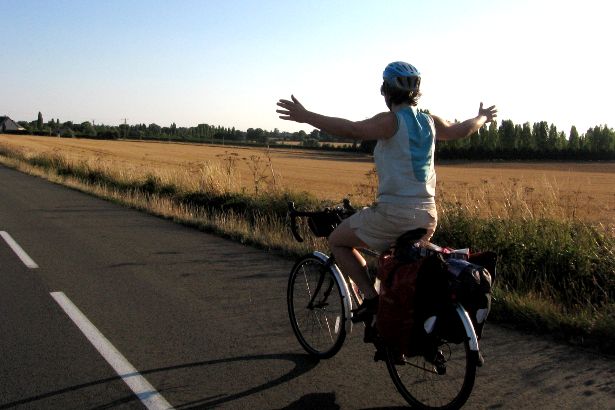
The first record of someone pedalling around the world is Englishman Thomas Stevens’ 13,000 mile journey by Penny Farthing in 1884 carrying little more than a spare shirt, a change of socks and a pistol. Much has changed since then – in particular there is less need for firearm – but the essence remains much the same: you can go a long way with a bicycle and a sense of adventure.
Skipping forward a hundred years or so to Valentine’s Day 2008, a Scotsman by the name of Mark Beaumont completed a high-profile circumnavigation of the globe by bicycle and in so doing set a world record for the fastest such journey. He was not the first to set such a record and in fact held it for only a short period of time, but he is certainly responsible for a greater public interest in the idea and practice of pedalling oneself across continents.
But what actually constitutes “cycling around the world”?
[divide]
[box type=”note” bg=”#ebebeb” color=”#111″ font=”arial” fontsize=”13″ border=”#a6a6a6″ head=”How To Cycle Around The World” headbg=”#21417b” headcolor=”#fff”]
 This is an edited excerpt from the How To Cycle Around The World chapter of my new book: How To Get To The North Pole And Other Iconic Adventures.
This is an edited excerpt from the How To Cycle Around The World chapter of my new book: How To Get To The North Pole And Other Iconic Adventures.
[button color=”green” link=”http://thenextchallenge.org/books” size=”big” font=”arial” fontw=”bold” textcolor=”#fff” texthcolor=”#d00000″ align=”center” radius=”8″]Order Now[/button]
[/box]
[divide]
Guinness World Records has a set of rules which define what constitutes an around the world cycle. These include:
- Cycling at least 18,000 miles in a given direction i.e. east or west.
- Crossing every line of longitude around the world and two antipodal points (opposite points of the globe).
- Travelling a total distance – including flights and boats – of at least as much as 24,900 miles, the earth’s circumference at the equator.
If you want to break the record then you will need to abide by these rules. Should you complete such a journey then few would dispute, in the technical sense, that you had indeed cycled around the world.
But to apply such a clinical approach to a venture like this seems to rather miss the point. One of the great beauties of the long-distance bicycle tour is the freedom it grants you and setting out with the sole intention of breaking a record flies in the face of that idea.
Cycling around the world can equally be defined less by a set of rules and more as a philosophy: the idea of riding a bicycle to and through many different places on our planet with the vague aim of ending up back where you started. That journey may take you across each line of longitude largely by power of pedal or perhaps you will have just travelled the world in the more metaphoric sense.
[divide]
[divide]
How to Get to the North Pole:
and Other Iconic Adventures
Newly published for April 2012
[button color=”green” link=”http://www.thenextchallenge.org/books/” size=”big” target=”_blank” font=”arial” fontw=”bold” textcolor=”#fff” align=”center” radius=”10″]Order Now[/button]

What do you think? Please do add your thoughts below…